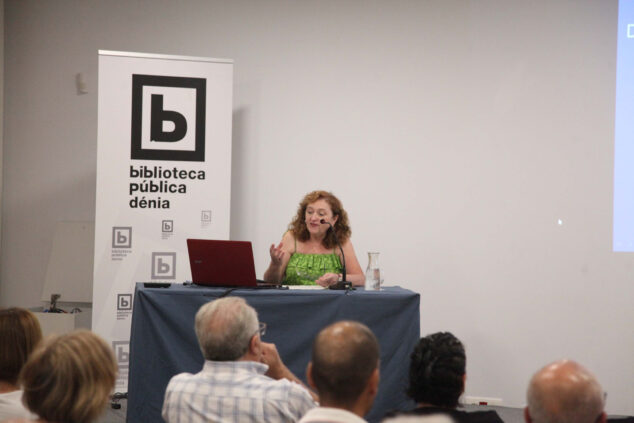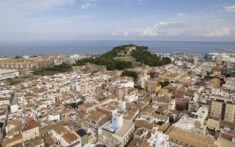Rosa Seser Pérez, municipal archivist of Dénia, gave the conference on Thursday, September 7 The procession 'de quan los moros vingueren al Saladar' year 1556. Historical context and documentary data about a procession of thanks for saving Dénia from a corsair attackin the Municipal Library.
In the presentation, Rosa Seser explained the historical events on which the procession De quan los moros vingueren al Saladar is based, which is celebrated this Saturday, September 9, in Dénia, being the first act of Moors and Christians of the 2023/2024 financial year. As explained by the municipal archivist, "in this historical trip we start from a specific event, the procession of thanks for saving Dénia from a corsair attack on September 10, 1556."
The XNUMXth century, as Rosa Seser related, "was a very conflictive time, when the sea, which today provides so much wealth and fun, was a very dangerous frontier from which it was necessary to flee, especially in that period that was the height of the conflicts between Christianity and Islam. Expressions that continue to be used today, such as "Moors on the coast" or "scarier than a Moorish frigate," can make us see the problems experienced in those times, she added.
On September 10, 1556, the town of Dénia suffered an unexpected Berber corsair attack. As Seser recounted, "in fact, the deniers had sent two hundred men to help the neighboring Xàbia, where everything indicated that it would be the target of the attack. The corsairs arrived in Dénia in ten galiotes and with six hundred men and advanced to the Saladar. The citizens of Dénia, despite having reduced defenses, were able to resist and finally the corsairs fled without achieving their objective. In honor of this event, this celebration was born with the purpose of giving thanks that the invasion hardly harmed the inhabitants, the procession 'of when the Moors vingueren al Salada'.
These historical events are related by Marc Antoni Palau in 1643, in the manuscript Diana unearthed, as Seser explains. "Some data that is now demonstrated in documents found in the Municipal Archive of Dénia, where the payments for the processions that continued to take place between the years 1614 and 1619 are preserved."
Rosa Seser's lecture provided the historical context of that procession, explaining what the society of that time was like. «The city of Dénia in the XNUMXth century was still divided into two nuclei: the upper town, the Castle, and that of the raval, which corresponds to the current urban center. The municipal power was in the Torre del Consell, which was the Town Hall of those times, and the church of the Assumption was in the upper part of the town. "The defenses were in the hands of the municipality, which could hardly keep the walls and the Castle enclosure out of danger, due to the constant assaults by Muslim, Turkish or Berber corsairs that Dénia received," said the municipal archivist.
«The enemy was close, in North Africa, helped by the powerful Turkish Empire, but it happened that, at the same time, the Moriscos who lived in the lands inside the Marina were afraid. The assaults were well known to all deniers and the kidnapping of people by privateers and slavery were a reality in those times," Seser notes. "It was necessary to face the problem with warnings to the population, with surveillance, with the arming of ships to confront the privateer and, of course, improving the defensive fortifications of Dénia."









